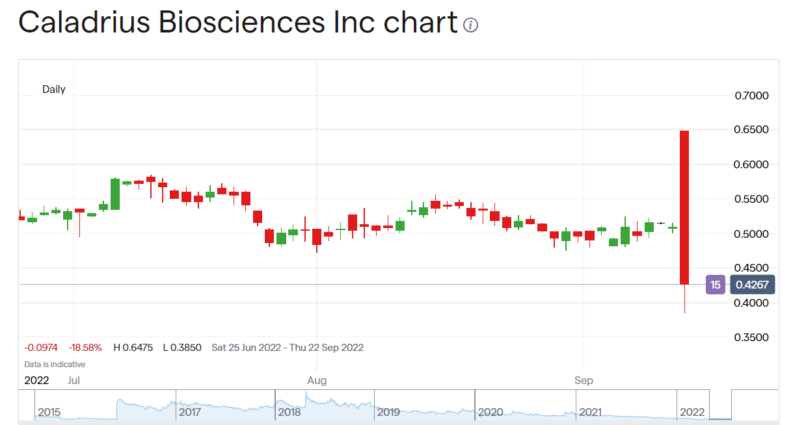Key points:
- Caladrius has merged with Cend to create Lisata
- The stock price is tickered as up 1,680% as a result
- But is that right, or is it more like 10% really?
Caladrius Biosciences (NASDAQ: CLBS) could be said to be up some 1,680% this morning as a result of the merger with Cend Therapeutics and the subsequent name change to Lisata Therapeutics (NASDAQ: LSTA). But that would be to look only at nominal prices which isn't a great guide to the real world. A better approximation of the real price move is about 10% up. This being just another of those reminders that we've got to distinguish between real and nominal prices.
This does matter more than just here, when there's a large and obvious difference between real and nominal prices. Inflation makes a mockery of price changes over time – thus we need to grasp the difference. Currently US inflation is around the 8% level. That means that if we make an 8% return over a year we've not really made one at all – we've stood still. Except, of course, we're likely to have been taxed on that 8%, meaning we've fallen behind even as we've made a good nominal return. That is, it's precisely in an inflationary environment that we've got to reach for returns – otherwise we're making losses by sitting still.
As to what actually happened – Caladrius has merged with Cend to create Lisata. This is now quoted under the new ticker, LSTA. So in one sense it's not possible to trade Caladrius any more. But clearly the old stock is transferred into the new so it still is.

Also Read: Five Best Pharmaceutical Stocks to Watch in 2022
This merger and renaming – the combination – could be said to have driven the 10% real price rise between the old CLBS stock and the new LSTA stock. But there's another 1500% rise there that also needs to be explained.
The answer to this is that the new combination also conducted a reverse stock split – a consolidation to Brits. The simple declaration that what were 15 pieces of stock in the old are now 1 piece of stock in the new. This is a purely nominal price change. Of and by itself it makes no difference to the value of the combination, nor to that of any individual shareholding. It's just a change in the number of pieces of paper that make up the ownership of the company. Which is how we know the price change should be 1500% – 15 times, see?
As to why this is done it's fashion now hardened into custom. The American style is that stock prices in the pennies are, well they're penny stocks. Which of course they are but that comes with connotations of being less than wholly pure and the province of scamsters and frauds. So, stocks listed on the major exchanges – NASDAQ and NYSE for example – must be above the minimum offer price of $1. So that's what they've done, a consolidation so that the formerly $0.43 cents price is now up in the mid $7 level in order to meet that standard. It's the price change over and above the 1,500% change which is the real price change here – the value of the combination and the retention of the NASDAQ quote.
